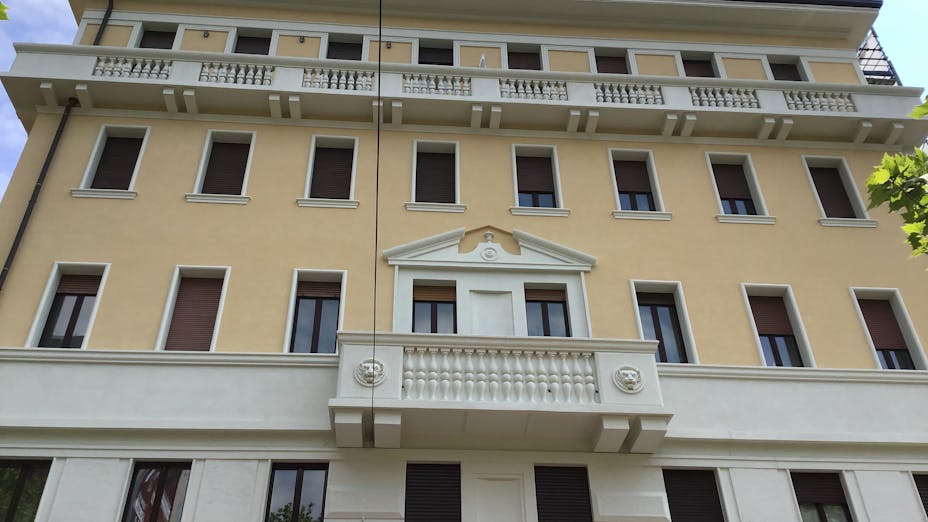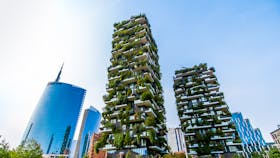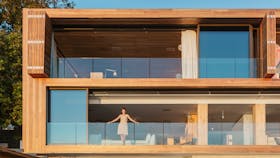The world’s building stock is ageing, and there are few places where this is more evident than in the historic city of Milan, Italy. Deep energy renovation within the city presents the most significant opportunity with the greatest return on investment to achieve the carbon-neutral goals as defined by the EU. As energy demand will only increase, using it efficiently can reduce the burden on national and city governments, notwithstanding the environment. The EU is also actively pursuing improved energy-efficiency as part of its post-COVID-19 recovery strategy.
To this end, the municipality of Milan is working to transform its iconic built environment towards a healthier, more sustainable future. The Milan 2030 plan promises a decade of significant transformations, aiming to improve the lives of its citizens. Although it may sound ambitious, the strategy is backed up by substantial evidence and successful projects like the renovation of the Viale Murillo apartment block in 2019.
Setting the renovation standard in Viale Murillo
Milan’s city administrators placed energy-efficiency at the top of their renovation agenda. Due to the age of the apartment building, it was energy inefficient and suffered from outside noise pollution generated by the busy streets surrounding the building. These inefficiencies created a poor indoor climate that affected the health and wellbeing of its residents.
The original building and façade date back to the early 20th century, where energy-efficiency, improved indoor climate, and preventing noise pollution did not factor into its original design. In Italy, most structures (82 percent in fact) were built before the government passed its first energy-efficiency laws. The apartment building in Viale Murillo was the perfect candidate to showcase what benefits and savings were available from a deep energy renovation project.
Enabling deep energy renovation of Milan’s historic buildings with fiscal incentives
What made the renovation project possible was the lucrative fiscal incentives available from both the city (a BE2 call launched by Milan’s municipality) and national governments. With the municipal and national incentives, the condominium could transfer the tax credits to the contracting company as payment. Using the eco-bonus, improving the thermal insulation on more than 40 percent of the building’s dispersing surface allowed for a tax deduction of 70 percent, while replacing the inefficient heating system provided a further 65 percent deduction.
The national government is also in the process of enacting another energy renovation scheme called the "Superbonus 110%". Under this scheme, the Viale Murillo multi-unit house building would have been eligible to recover 110 percent of the project cost. With the Superbonus renovation incentive, Italy is aiming to jump-start its construction and renovation sectors to stimulate economic activity and speed up its post-COVID-19 recovery.
Quantifying the benefits of the Viale Murillo renovation project
The project was executed in partnership with ROCKWOOL Group and EnelX, overseen by the Milanese construction company Teicos Group. The primary design considerations were to provide greater comfort, reduce operating costs, and establish a more sustainable indoor environment for the residential and commercial units in the building. Some of the most significant challenges included limiting the disruption to residents during the project while also retaining the historical aesthetics and preserve the original architecture of the building wherever possible.
Essentially, the project needed to retain the old soul of the building while using innovative technologies and techniques to drastically improve its energy-efficiency, acoustic capabilities, and indoor air quality. Collaborating with the right suppliers and subject matter experts enabled the project to achieve all its stated goals.
In addition, a study from Corriere Economia found that renovation interventions in six major Italian cities could increase the values of properties by an average of 14 percent. In some areas of Milan, it could be as high as 30 percent.
Overcoming the challenges of a deep energy renovation for iconic buildings
The Viale Murillo project posed many of the same challenges most of Europe’s old buildings face. These included:
- Private ownership of a multi-unit building, slowing down the approval process.
- Retaining the historical prominence of a building while improving its energy-efficiency.
- Accommodating the unique façade, original mouldings, and recognizable profile of the building.
To overcome these challenges required a concerted effort from the building’s residents, national and local government, and technical expertise from a variety of stakeholders. EnelX provided the gas heat pump capable of reducing consumption and emissions. At the same time, ROCKWOOL Group was required to supply the thermal insulation solution for the façade and interior of the building.
How ROCKWOOL Group contributed to the project’s success
According to the project manager from Teicos Group, engineer Federica Roseano, improving the energy-efficiency of the building required a massive intervention on the envelope and made it possible to homogenise temperatures of all the climatic zones.
For this reason, the project selected the ROCKWOOL REDArt External Thermal Insulation Composite System (ETICS) for its superior performance and cost optimization to improve the building’s façade.
The benefits of choosing the correct insulation solutions also included:
- Improved energy-efficiency and thermal retention during winter and summer climates.
- Reducing the costs of the energy bills due to the increased thermal performance.
- Providing healthier indoor climates and internal environments for the occupants.
- Limiting the formation of mould and damage caused by condensation.
The additional acoustic properties of stone wool insulation also helped to solve the challenge of the noisy outside environment, making it the perfect technology for renovating the Viale Murillo building. ROCKWOOL solutions were also used for other insulation interventions to improve the thermal performance of the structure by installing stone wool panels in the cellars, bottom floor, and the roof. Finally, due to the fire-resistant properties of stone wool, ROCKWOOL products have been selected to increase the fire-safety of the building in case of fire.
With these interventions, the building’s overall thermal performance saw a drastic increase. The project managed to upgrade the energy class of the building from a G (the worst possible rating) to a C class structure, while overall energy consumption fell from 175kW/m2 to 48kW/m2.
The entire renovation project lasted six months without disrupting the daily lives of occupants. Energy-saving solutions helped to reduce operational costs, provide improved indoor comfort, and deliver greater acoustic performance inside the building.
Our participation in this social, economic, and environmentally sustainable project showcased the possibilities that deep energy renovation can bring to cities around the world. Read more of our case studies here.

It’s time to build a better future
To meet the Paris Climate Agreement’s goal of keeping the temperature rise well below 2°C, we need to act now
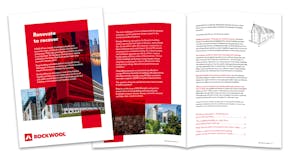
Renovate to recover
COVID-19 has created simultaneous health and economic crises, on top of a climate crisis that isn’t going away. That’s why greening the economic recovery is so important. Here are four
perspectives on how building renovation has the potential to impact climate change, economic recovery and help cities create local jobs.
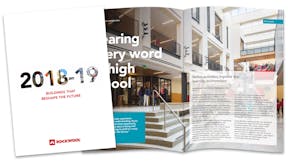
Top 16 renovation case studies
We've gathered up our best renovation case studies for you to get inspired for your next project!

